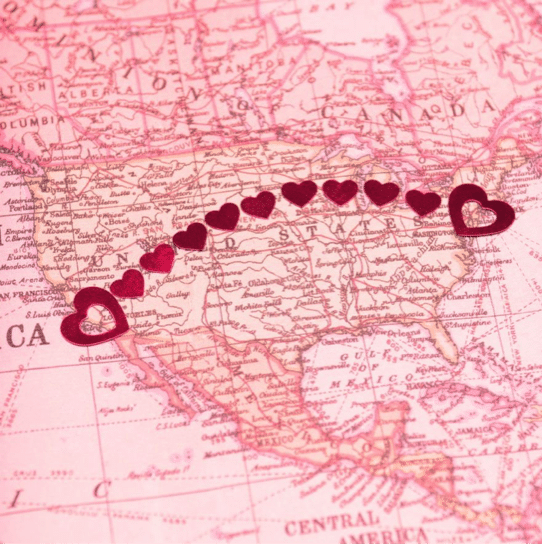Who is a Long-Distance Caregiver?
A long distance caregiver is defined as a caregiver living at least one hour away from a person they are caring for. In the United States, it is estimated that over 7 million people are caring for someone from a distance. Not only is this number increasing because we are such a mobile society, but also the number of seniors who have moved to a new state in the last decade has increased 65%. The number of long distance caregivers in the United States is expected to double by the year 2020.
Tips for Managing Long Distance
Managing care from a distance can be difficult and staying organized is important. Here are a few tips:
- Keep an up to date list of people in your loved one’s circle, including phone numbers. This could include doctors, neighbors, caregivers, friends, and family. Keep a copy in an easily accessible place. Make sure one of the contacts lives nearby, in case of an emergency.
- Consider giving someone you trust a garage code or key, just in case of an emergency.
- It is important to keep a list of medical conditions, medications, and at least one emergency contact on the fridge. This is the first place most medical emergency personnel will look.
How to Plan for Your Visits
To make the most out of the short amount of time you have when visiting your loved one, it can be helpful if you prepare ahead of time. Here are a few suggestions:
- Pre-schedule doctor’s appointments, and other meetings related to services of interest.
- Make a list of items that are needed including furniture, medical equipment, groceries, and medications.
- Allow time for going through the mail, fridge, and home in general to ensure it is safe.
- Check to see if medications are sorted and being taken properly.
- Be sure to set aside time for fun, too! Take a walk, go see a movie, or go to your favorite restaurant together.
You will probably need to reassess every visit, or a few times a year, as things may change over time.
How Others Can Help from a Distance
Others who are far away may have a difficult time knowing how to help. There are many ways someone on your care team can help from afar, especially with technology. Below are just some of the ways to support a local caregiver:
- Phone calls:Call doctors for information or to make appointments. Order groceries and medications. Support the local caregiver, or update family and friends via phone calls.
- Online:Help by paying bills and keeping track of finances. Order medications, groceries, or other items that can be delivered. Research diagnoses, diseases, doctors, etc. Skype or FaceTime, if your loved one is able to.
- E-mails:Stay in touch with family, friends, and the local caregiver. Set up shared calendars and create to do lists.
- Respite Care:Provide occasional respite care. Give the local caregiver some much needed time for themselves. Even a few hours can make a difference.
Resources for Caring from a Distance
A great way to keep your loved one’s health information organized is by using a Vial of Life. This is a form that is recognized by all emergency responders and should be kept on the fridge. You can find a free Vial of Life kit here:
http://www.vialoflife.com/print-free-vial-kits/
If you need help managing care from a distance, a Geriatric Care Manager may be able to help. Geriatric Care Managers help with coordinating care and services, finding resources, and monitoring care.
To find a Geriatric Care Manager in your loved ones’ area: http://www.aginglifecare.org/
The ElderCare locator can help you find local care for your loved one: https://eldercare.acl.gov/Public/Index.aspx
A program to help monitor your loved one’s well-being is the Postal Service Mail Carrier Alert Program. Through this program, a sticker will be placed inside your loved ones’ mailbox. This alerts the letter carrier to let someone know if mail is suddenly starting to accumulate. For more information: https://www.nalc.org/community-service/carrier-alert


